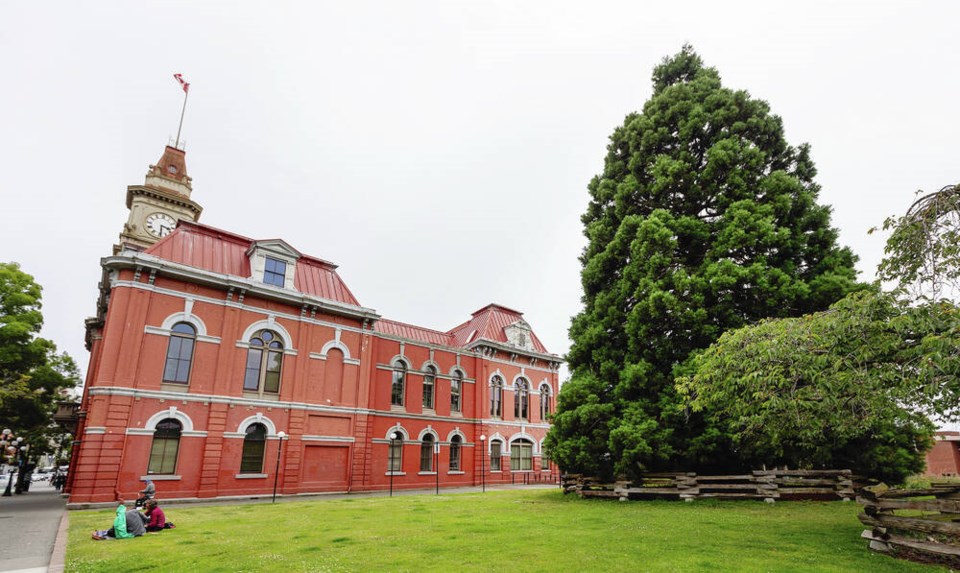A commentary by a consulting arborist and urban forestry educator based in Victoria.
The redesign of Victoria’s Centennial Square is moving closer toward breaking ground, and there remains a chance for sober second thought on the fate of a highly appreciated giant sequoia.
We’ve been informed that the removal is to improve sightlines for public safety in the square, that the tree isn’t a native species, that accessibility standards cannot be met, that the tree wasn’t part of the original 1964 design, and that the tree’s roots may cause future damage to underground infrastructure.
All but one of the criteria being shared by City of Victoria council and staff would fall short of the city’s own tree protection policies that regulate tree removal for developments on private property.
For trees growing in pits surrounded by pavement and concrete, life may be short. To live longer than 20 years and reach a large stature requires a considerable investment of time and money.
Growing conditions are hotter and drier than 50 years ago, installation and maintenance costs are going up, and keeping trees alive has become an increasing challenge for urban foresters.
Trees are not assured to survive their first five years after planting, and there is similarly no assurance that the range and amount of benefits the existing sequoia provides to the community will be proportionately offset.
The city’s persuasion that 17 new trees “will help” reduce heat island effect and slow rainfall from reaching storm drains are short on meaningful metrics.
The city’s signals that a non-native species status should factor into a decision to remove a highly appreciated community tree is disconnected from the city’s established policies and practices for urban forest management.
For example, records obtained through FOIPPA detailing the city’s public tree planting program outputs indicate that between 2019 and 2023, zero (0) native species trees were planted in Downtown, Harris Green, and North Park neighbourhoods.
The City of Victoria’s Trees and Urban Forest website states its goals to “Maximize species and age diversity,” and “adapt to our changing climate.”
Further, the City of Victoria’s Tree Protection Bylaw allows both native and non-native species as replacement trees.
Council appears to be confused by its own urban forestry vision and policies that govern the urban forest on public and private lands. To remove a protected giant sequoia on private property using the criteria provided by the city (detailed above), City of Victoria Parks would require third-party professional evidence that all efforts have been exhausted to retain the tree by changing the development design, or by deploying tree care and protection in demolition and construction phases.
Tree roots and infrastructure can co-exist, such that there are numerous professionals with expertise on that relationship that are operating locally, including at City of Victoria.
Roots from hundreds of city trees interact with city infrastructure and underground utilities, including underground hydro infrastructure.
The dualism of decisions that remove a tree highly valued by the community for primarily aesthetic purposes, while also stating that “tree removal is always the last resort” is creating a significant risk to City of Victoria’s urban forestry reputation.
There is still time for City of Victoria to seek a second professional opinion from a third party experienced in large urban realm development projects managing mature trees through design conflicts.
We need public models to encourage the desired change for development on private property, and this tree’s overall contribution and future potential for the community has not been adequately considered.
>>> To comment on this article, write a letter to the editor: [email protected]



